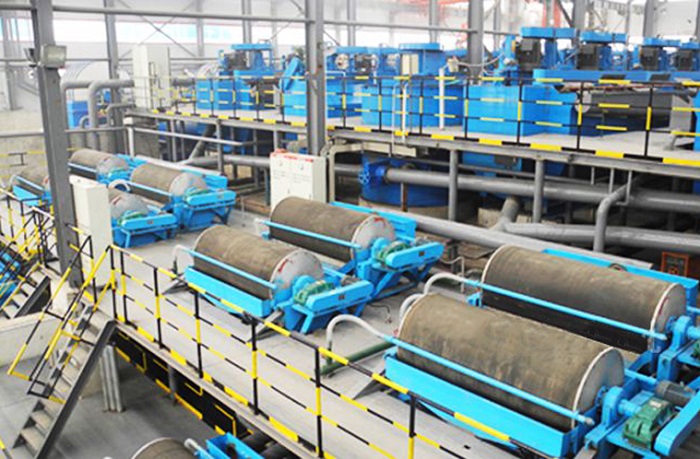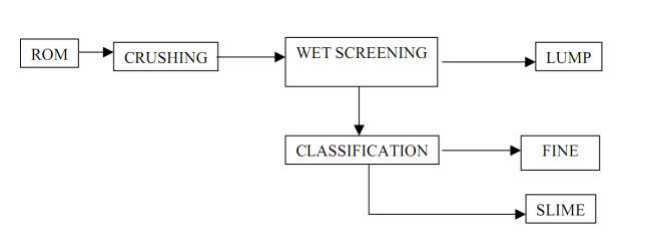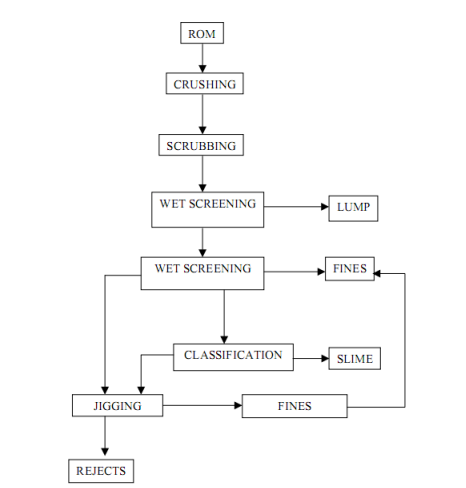Sinonine deeply know that most prominent ore found in world are mainly hematite and magnetite. Among these, hematite is considered to be most important. Iron ore is used in production of pig iron which is further used in production of steel other uses of iron ore are like industrial finishes, polishing compounds and sponge iron industries. Iron ore belongs to Precambrian stage and its deposit is present in massive, laminated, friable and also in powdery form.
Hematite
Hematite is most important iron ore mineral main source for industries. Its composition is Iron Oxide and sometimes slight amount of titanium. Its name comes from the Greek word for blood, haima, because of its reddish colour. Crystals occurs in thin plates, as well as bundles of small micaceous plates, and in thin splinters. Most commonly massive, mammilary, botryoidal, reniform, oolitic, stalactitic, and radiating. Scalenohedral and rhombohedral crystals occur, although infrequently, and dendritic and rosette forms are also found. Hematite may also form as a pseudomorph of other minerals, especially as octahedral crystals of Magnetite. Striking features are reddish streak, hardness, crystal habits and Para magnetism. It becomes strongly magnetic when heated. Its specific gravity is 4.9 to 5.3 and luster is metallic to dull. Hematite is weakly magnetic, but it has a variety called magnetite which is found in many ore bodies in minute quantities having magnetic properties closely related to those of magnetite. The content of iron in the ore and physical characteristics vary from place to place in different types of ores.
Magnetite
After hematite, magnetite is second most abundant Iron bearing ore. Black magnetic oxide of iron crystallizing in the isometric system with hardness of 5.5 to 6.5. Magnetite ore is of little value in its raw state, but it offers considerable advantages in its concentrated form. These include providing a viable iron-making commodity for premium quality steel production. By comparison, magnetite ore typically has much lower iron content when mined of between 25% and 40% Fe and in this form is unsuitable for steel making. The main iron mineral in magnetite ore is the ferrous iron oxide magnetite (Fe3O4). Magnetite ore requires complex processing to separate magnetite minerals from other minerals in the ore to produce an almost pure magnetite concentrate with an iron content of between 68% Fe and 70% Fe that is highly sought after by steel makers. It also occurs as a replacement product in sedimentary or metamorphic rocks. It is found as placer deposits as ―black sand‖ in beach deposits and as banded layers in metamorphic and igneous rocks.

Processing of Iron ore
Iron processing depend mainly on the type of ROM ore feed and optimum product. Dry screening into lumps and fines is practised for high quality flaky ore and blue dust, because, if wet treatment is used, a substantial part of good quality material is rejected in the form of slimes. Another advantage of dry screening is dry screened fines also retain ultra-fines particle may later be used in sintering. Ore types having gangue material which strictly adhere to the useful metal surface are subjected to wet screening -> classification or scrubbing -> wet screening -> classification. Mineral processing plants at mines usually use dry screening for direct ore mined from the face.
Part of plants use wet screening - classification for ores that meet the cut off criteria. Scrubbers are being used in some beneficiation plant for better recovery. Some mines have hydro cyclones ,spiral classifiers for better beneficiation process . Log washers are also being used to produce better and stable quality lumps of iron ore in some mines. Various techniques and methods generally being used in iron ore processing are schematically shown in the figures below.
Fig1.Dry screening process

Fig2.Wet screening classification

Fig3.Scrubbing wet screening classification

Fig4.Washing and gravity separation process

Slimes of Iron ore
For improving quality and to reduce cost of production iron ore industries are demanding high grade raw minerals. However, the ore being a non-renewable natural resource, the reserve of good quality ore is depleting. Marginal to sub-marginal ore should be used to meet the present as well as future requirements and avoid environment related problems. The circumspect utilization of Iron ore can conserve high grade mineral resource. So today there is need of sustainable development in iron ore mining that is need of present without compromising the need of future generation. So it becomes vital to develop some technique for beneficiation of unutilized low grade ore and ultra-fine material i.e. slime. Washing plant data implies that generation of slime comprise of 30-35% of the total ore mined. Because of lack of technology and its complex nature, a significant quantity of slime remains unused. These slimes are dumped which causes environmental hazards. If pellets are produced directly from such fines, they become high in alumina which is undesirable in Blast furnace as high alumina content will adversely affect the pellet properties, typically measured by Reduction Degradation Index (DRI) and Reducibility Index (RI). A drop in alumina content can improve these properties and also reduce the coke consumption in Blast furnace. Tailings contain harmful material like iron sulphide which is primary source for acid mine drainage. Sedimentation test show that the tailings and the area required for tailing pond is around 3155 m 2 in comparison to 10,000 m2 obtained from the use of an empirical equation. It is very difficult to evaluate the characteristics of these slimes where most of the particles are below 50 microns. Base on the fact that iron ore production wills more than double and rise to at least 300 million tonnes soon, finding suitable methods of safe disposal/utilization of slimes is indeed urgent. If we look at the present quantity of the iron ore slimes that is being generated annually, amalgamation of quantity of slimes, over the years the fact that slimes are available in ground form and assaying that is reasonably high %Fe, it is natural that if beneficiated in a proper way, these slimes can be considered a national resource rather than a waste. The alumina content of the slimes, if brought to less than 2% Al2O3 in the beneficiated product will
---Lead to better utilization of national resources.
---Achieve more mine output (enhanced production) with not much additional costs.
---Reduce environmental issues associated with storage and disposal of slimes.
---Result in higher blast furnace and sinter plant productivity.
In view of the above facts proper technology shall be adopted for processing of slimes to recover iron ore values from them, this will be a step forward for conservation of mineral in national interest. As particle size in slime is finer (<.15mm) so it will be easy to beneficiate the slime without the use of any combination process.
In last twenty years importance is slowly tilting towards slime beneficiation and in addition to the traditional methods of processing, enhanced gravity separators (EGS) such as Falcon, Knelson concentrator are also being experimented with to beneficiate the Slimes. Now aday’s novel method of beneficing iron ore slime is used via magnetic and gravity method ofseparation.
Two distinct mineral constituent of Alumina iron ore slimes are gibbsite (hydrated aluminium oxides) and kaolinite. Exact amount of alumina has not been quantified till date according to liberation studies a significant portion of alumina is present in the liberated form and so it is possible to separate them using physical methods. Slag viscosity in blast furnace is increased due to high alumina content. This leads to increase in metal loss in slag, increase in thermal requirement and thus makes the Blast furnace operation more tough. To reduce alumina burden new technologies are adopted by steel industries. Using pellets can reduce this burden.
All around the world Iron ores are being beneficiated,Several Methods such as
---Spiral
---Floatex density separators
---Jigs
---3 multi-gravity separator
---Low and high intensity magnetic separator
---Conventional as well as column flotation
---Selective dispersion
---Flocculation is all part of current industrial practice.